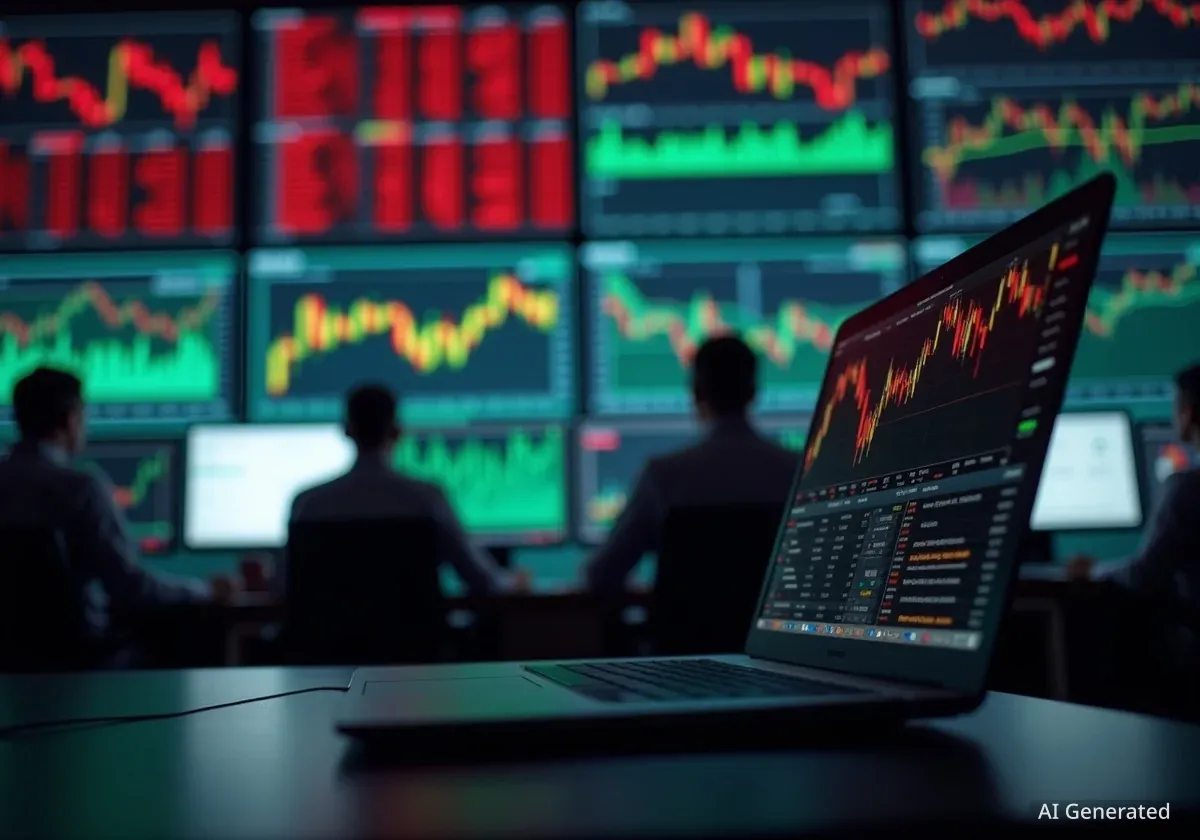Global financial markets are navigating a period of heightened uncertainty, driven by a complex interplay of economic factors. Investors are closely monitoring inflation trends, interest rate decisions by central banks, and geopolitical developments, all of which contribute to a volatile environment. This landscape demands careful analysis and strategic adjustments from market participants worldwide.
Key Takeaways
- Inflation remains a primary concern for central banks globally.
- Interest rate hikes are impacting borrowing costs and economic growth.
- Geopolitical tensions add to market volatility and supply chain disruptions.
- Energy prices continue to influence consumer spending and corporate profits.
Inflationary Pressures Persist Globally
Inflation continues to be a dominant theme across major economies. Consumer Price Index (CPI) data in several countries shows elevated levels, far exceeding central bank targets. This persistence is largely due to a combination of strong consumer demand, ongoing supply chain bottlenecks, and rising energy costs.
Central banks, including the U.S. Federal Reserve and the European Central Bank, have responded with aggressive monetary tightening. Their primary goal is to bring inflation back down to sustainable levels, typically around 2%.
"The fight against inflation is far from over. We expect central banks to remain resolute in their efforts, even if it means some economic slowdown," stated a leading economic analyst earlier this week.
Impact on Consumer Spending
High inflation erodes purchasing power, forcing consumers to make difficult choices. Data from various retail sectors indicates a shift in spending habits, with a greater focus on essential goods and services. Discretionary spending has seen a noticeable decline in many regions.
Fact Check
- The latest CPI report showed a year-over-year increase of 6.5% in one major economy.
- Energy prices have contributed over 30% to overall inflation in several developed nations.
- Consumer confidence surveys reveal a significant dip, reaching multi-year lows in some areas.
Central Banks Tighten Monetary Policy
To combat inflation, central banks have embarked on a series of interest rate increases. These actions aim to cool down overheated economies by making borrowing more expensive, thereby reducing demand. The pace and magnitude of these hikes have been significant, marking a departure from years of ultra-low interest rates.
The Federal Reserve has raised its benchmark rate multiple times, with further increases anticipated. Similarly, the European Central Bank and the Bank of England have also moved to tighten their monetary policies. These synchronized actions have global implications, affecting currency exchange rates and international capital flows.
Rising Borrowing Costs
Higher interest rates translate directly into increased borrowing costs for businesses and individuals. Mortgage rates have climbed, impacting the housing market. Corporate lending has also become more expensive, potentially slowing down investment and expansion plans. Small and medium-sized enterprises (SMEs) are particularly vulnerable to these changes.
Historical Context
The current period of aggressive monetary tightening is reminiscent of the late 1970s and early 1980s, when central banks wrestled with persistent inflation. Lessons from that era suggest that sustained commitment is crucial, even if it entails short-term economic pain.
Geopolitical Tensions and Supply Chains
Ongoing geopolitical tensions continue to cast a shadow over global markets. Conflicts and strained international relations disrupt supply chains, leading to shortages and increased costs for raw materials and finished goods. Energy markets have been particularly sensitive to these developments, experiencing sharp price fluctuations.
The uncertainty generated by these events makes long-term planning challenging for businesses. It also contributes to investor risk aversion, leading to increased volatility in stock markets and commodity prices. Companies are actively seeking to diversify their supply chains to build resilience against future disruptions.
Energy Market Volatility
Energy prices remain a critical component of the global economic outlook. Fluctuations in oil and natural gas prices directly impact transportation costs, manufacturing expenses, and utility bills for consumers. Efforts to transition to renewable energy sources are ongoing, but the immediate reliance on traditional fuels leaves economies exposed to geopolitical risks.
- Oil prices have seen swings of over 20% in recent months.
- Natural gas futures have also experienced significant volatility.
- Governments are exploring strategic energy reserves and alternative sourcing to mitigate risks.
Looking Ahead: Navigating the Uncertainty
The path forward for global markets is likely to remain challenging. Investors and businesses must adapt to an environment characterized by higher inflation, tighter monetary policy, and persistent geopolitical risks. Diversification and a focus on resilient sectors may offer some protection.
Economic forecasts suggest a potential slowdown in global growth, with some economies facing a risk of recession. However, the exact trajectory will depend on how effectively central banks manage inflation and how geopolitical events evolve. Vigilance and flexibility will be key for navigating these turbulent times.





